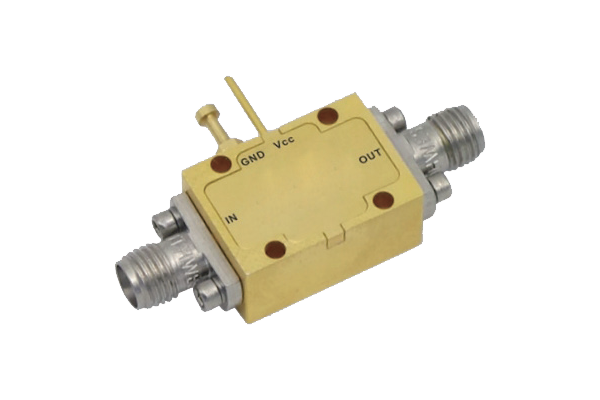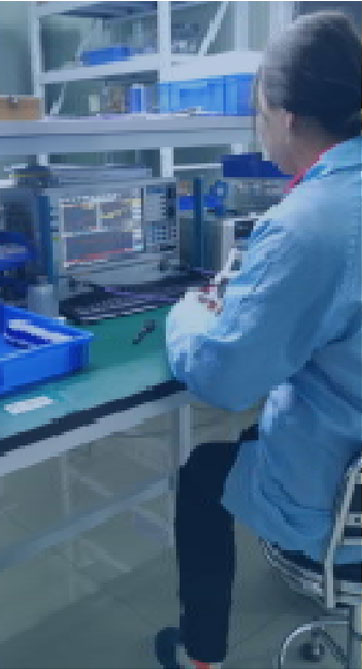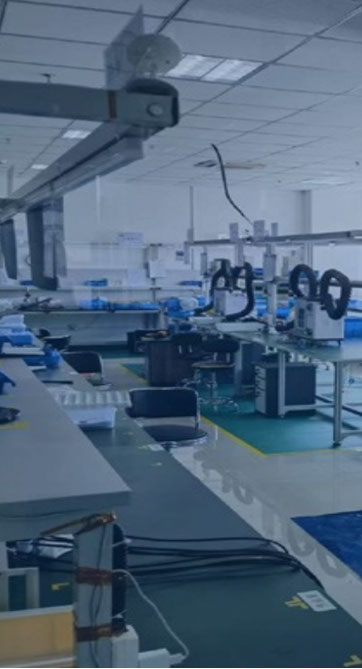
Pin diodes have become a crucial element in high-frequency systems because of their innate electrical traits Their prompt switching characteristics combined with low capacitance and small insertion loss enable efficient use in switching modulation and attenuation scenarios. The operative principle for PIN diode switching centers on bias-controlled current modulation. Voltage bias impacts the depletion layer width across the junction and consequently the conduction. Adjusting the bias enables PIN diodes to be switched for high-frequency operation while minimizing distortion
For applications demanding exact timing and control PIN diodes are typically incorporated into complex circuitry They are useful in RF filtering systems for choosing which frequency bands to pass or suppress. Their competency in managing strong signals qualifies them for amplifier power splitter and signal source applications. Advances producing smaller and efficient PIN diodes have widened their roles in modern wireless and radar applications
Performance Considerations for Coaxial Switch Engineering
The design of coaxial switches is intricate and needs detailed assessment of numerous variables The operation of a coaxial switch is affected by the selected switch topology frequency band and insertion loss behavior. Minimizing insertion loss and enhancing isolation are primary goals for coaxial switch engineering
Performance studies concentrate on return loss insertion loss and isolation measurements. Such parameters are usually determined via simulations analytic models and physical experiments. Reliable operation of coaxial switches demands thorough and accurate performance analysis
- Engineers use simulation software analytical calculations and experimental methods to evaluate coaxial switches
- Coaxial switch behavior is sensitive to temperature, impedance mismatch and assembly tolerances
- Recent innovations and trends in coaxial switch design prioritize better metrics together with reduced size and lower power draw
Low Noise Amplifier LNA Design Optimization
Enhancing the performance efficiency and gain of a Low Noise Amplifier is vital for preserving signal integrity in many systems The process needs precise choice of transistors bias points and topology design. Effective LNA designs minimize internal noise and maximize clean signal gain with little distortion. Analytical modeling and simulation utilities are key to predicting how different design options influence noise behavior. Reducing the Noise Figure remains the design target to ensure strong signal retention with minimal added noise
- Opting for transistors with small inherent noise is a vital design decision
- Optimal proper and suitable bias conditions are necessary to limit noise generation in transistors
- Circuit topology significantly influences overall noise performance
Tactics like impedance matching noise mitigation and feedback regulation advance LNA performance
Signal Switching Using Pin Diodes

PIN diode switching mechanisms deliver versatile and efficient RF path routing across designs Fast state changes in these devices permit agile dynamic routing of RF signals. Their minimal insertion loss and robust isolation characteristics prevent significant signal degradation. Use cases include antenna selection duplexer networks and phased array antennas
A control voltage governs resistance levels and thereby enables switching of RF paths. When off or deactivated the diode exhibits high resistance effectively blocking RF energy. The application of a positive bias reduces device resistance and permits RF passage
- Furthermore additionally moreover pin diode switches deliver fast switching speeds low power use and compact footprints
Various architectures configurations and designs of PIN diode switching networks enable complex routing operations. Linking multiple PIN switches produces dynamic matrices that allow adaptable signal path configurations
Evaluation of Coaxial Microwave Switch Performance

Rigorous evaluation and testing of coaxial microwave switches are key to confirming dependable operation in electronics. Multiple determinants including insertion reflection transmission loss isolation switching speed and operating bandwidth shape performance. Complete evaluation comprises quantifying these parameters across different operating environmental and test conditions
- Furthermore the testing should cover reliability robustness durability and resistance to harsh environmental influences
- Finally results from comprehensive testing offer crucial valuable essential data to inform selection design and optimization of switches for particular applications
Minimizing Noise in LNA Circuits A Comprehensive Review
LNA circuits play a crucial role in wireless radio frequency and RF systems by boosting weak inputs and restraining internal noise. The article delivers a wide-ranging examination analysis and overview of methods used to reduce noise in LNAs. We investigate explore and discuss chief noise sources including thermal shot and flicker noise. We also cover noise matching feedback network techniques and ideal bias strategies to mitigate noise. It showcases recent advancements such as emerging semiconductor materials and creative circuit concepts that reduce noise figures. By giving a clear understanding of noise reduction principles and practices this article aims to assist researchers and engineers in developing high performance RF systems
Applications of PIN Diodes for Fast Switching

They exhibit unique remarkable and exceptional features that render them ideal for high speed switching Low capacitance combined with low resistance produces rapid switching for applications requiring precise timing. Also PIN diodes respond proportionally to voltage which allows controlled amplitude modulation and switching actions. Versatility flexibility and adaptability enable their suitable applicable and appropriate deployment in many high speed applications They are applied in optical communications microwave systems and signal processing equipment and devices
Integrated Circuit Solutions for Coaxial Switching
Integrated coaxial switch IC designs improve signal routing processing and handling across electronic systems circuits and devices. The ICs are designed to direct manage and control coaxial signal flow offering high frequency operation and reduced propagation insertion latency. IC miniaturization enables compact efficient reliable and robust designs ideal for dense interfacing integration and connectivity needs
- With careful meticulous and rigorous execution of these strategies designers can obtain LNAs exhibiting excellent noise performance for sensitive reliable systems By meticulously pin diode switch carefully and rigorously adopting these practices designers can deliver LNAs with excellent noise performance supporting reliable sensitive systems Through careful meticulous and rigorous implementation of these approaches engineers can achieve LNAs with exceptional noise performance supporting sensitive reliable systems Through careful meticulous and rigorous application of such methods engineers can design LNAs with top tier noise performance enabling dependable sensitive systems
- Applications cover telecommunications data networking and wireless communication systems
- Aerospace defense and industrial automation represent important application areas
- These technologies appear in consumer electronics A V gear and test and measurement setups
LNA Design Challenges for mmWave Frequencies

mmWave LNA challenges include significant signal attenuation and greater sensitivity to noise sources. Parasitic capacitances and inductances become major factors at mmWave demanding careful layout and parts selection. Ensuring low input mismatch and strong power gain is critical essential and important for LNA operation at mmWave. Selecting active devices like HEMTs GaAs MESFETs and InP HBTs greatly affects achievable noise figures at these frequencies. Furthermore the design and optimization of matching networks is crucial to securing efficient power transfer and impedance match. Managing package parasitics is required to avoid degradation in mmWave LNA operation. Selecting low-loss transmission paths and optimal ground plane layouts is essential necessary and important for reducing reflection and preserving bandwidth
Modeling Strategies for PIN Diode RF Switching
PIN diodes are critical components elements and parts in many RF switching applications systems and contexts. Exact detailed and accurate characterization of these devices is essential for the design development and optimization of reliable high performance circuits. Included are analyses evaluations and examinations of electrical voltage and current characteristics such as resistance impedance and conductance. Also characterized are frequency response bandwidth tuning capabilities and switching speed latency response time
Additionally moreover furthermore the development of precise models simulations and representations for PIN diodes is critical essential and vital for predicting behavior in complex RF contexts. Different modeling methods like lumped element distributed element and SPICE models exist. Which model simulation or representation to use depends on the particular application requirements and the expected required desired accuracy
Advanced Strategies for Quiet Low Noise Amplifier Design
Engineering LNAs demands careful topology and component decisions to achieve superior noise performance. Emerging novel semiconductor developments have allowed innovative groundbreaking sophisticated design strategies that cut noise considerably.
These techniques often involve employing utilizing and implementing wideband matching networks adopting low-noise high intrinsic gain transistors and optimizing biasing schemes strategies or approaches. Furthermore advanced packaging and thermal control strategies play an essential role in lowering external noise contributions. Through careful meticulous and rigorous application of such methods engineers can design LNAs with top tier noise performance enabling dependable sensitive systems
